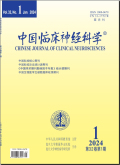Fetal Mesencephalic Neuron Transplantation and Tyrosine Hydroxylase Gene Therapy for Monkey and Rat Models of Parkinsonism Induced By MPTP or 6OHDA
@@The intracerebral transplantation and gene therapy may provide putative therapeutic approach to Parkinson′s disease. In the present study, implant of fetal mesencephalic dopamine neuron into I-methyl-4-phenyl-1,2,3,6-tetrahydropyridine (MPTP)-induced hemiparkinsonian monkey model and in vivo and ex vivo tyrosine hydroxylase(TH) gene therapy for 6-hydroxydopamine(6-OHDA)-induced hemiparkinsonian rat model were investigated. The monkey model of hemiparkinsonism induced by unilateral administration of MPTP into the common carotid artery of three rhesus monkeys. The cell suspensions of substantia nigra obtained from human fetus of 11-12 weeks of gestation were injected stereotaxically into the caudate nucleus or substantia nigra of the lesioned side. The recipients were immunosuppressed by taking cyclosporine A for one month following the implant procedure. Apomorphine(APO)-induced motor asymmetry was significantly improved during the period of 18 weeks after graft. TH immunostaining assay demonstrated the surviving and sprouting of TH-immunoreactive cell bodies in the caudate nucleus for almost one year.
Gene Therapy、substantia nigra、caudate nucleus、common carotid artery、tyrosine hydroxylase、gene therapy、human fetus
8
R74;R96
2005-07-07(万方平台首次上网日期,不代表论文的发表时间)
共1页
24








